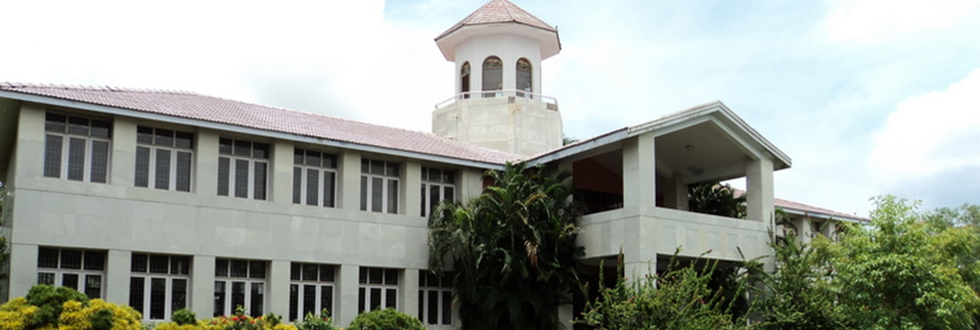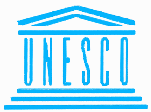 For over two thousand years, scribes have recorded much of India's literary and scientific heritage on the readily available medium of dried, smoothed and smoke-treated leaves of talipot (olai in Tamil) palm trees. Carefully etching letters into the dried leaf with a stylus in a manner that avoids splitting the leaf and later applying lampblack or turmeric to enhance contrast and legibility, uncounted generations of scribes preserved much of India's vast intellectual legacy. When left undisturbed in the tropical climate, these palm-leaf manuscripts could last three or four centuries, after which a new patron would commission scribes to copy the precious manuscripts onto freshly treated palm-leaves. For over two thousand years, scribes have recorded much of India's literary and scientific heritage on the readily available medium of dried, smoothed and smoke-treated leaves of talipot (olai in Tamil) palm trees. Carefully etching letters into the dried leaf with a stylus in a manner that avoids splitting the leaf and later applying lampblack or turmeric to enhance contrast and legibility, uncounted generations of scribes preserved much of India's vast intellectual legacy. When left undisturbed in the tropical climate, these palm-leaf manuscripts could last three or four centuries, after which a new patron would commission scribes to copy the precious manuscripts onto freshly treated palm-leaves.
According to a recent survey, there are more than a hundred thousand unpublished palm-leaf manuscripts on various aspects of traditional Indian knowledge in Tamil, one of India's two classical languages (the other being Sanskrit). This corpus represents a significant portion of the distilled experience of Tamil-speaking civilization transmitted from generation to generation over two millennia preserved either through oral tradition or in written form as palm-leaf manuscripts. These palm-leaves number in the many tens of thousands in Tamil Nadu alone and may be found in repositories as far north as Jammu and Kashmir.
The existing palm-leaf manuscripts in Tamil on traditional science cover the following 12 areas:
1.Indigenous medicine, including:
- Siddha;
- Ayurveda; and
- Yunani systems
2. Human anatomy (Varmam, surgery)
3. Veterinary science (Vakatam)
4.Agriculture (Kuvam, Karanul)
5.Traditional art and architecture:
- Temple art
- Temple architecture
- Shipbuilding
- Carpentry
- Metalworking
- Sculpture
6. Traditional musicology
7.Techniques of writing
8.Astrology & astronomy
9.Yoga
10.Animal husbandry
11.Martial arts
12. Physiognomy (Samudria Laksanam) |
|
|
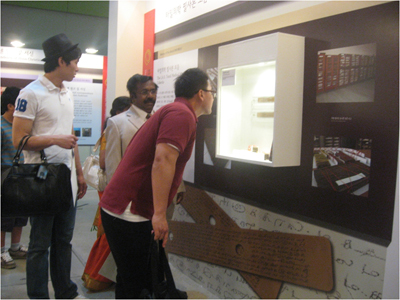 Given the great intellectual vitality of the Indian mind and Indian culture's high regard for inherited knowledge, it is no surprise that a vast corpus of these palm-leaf manuscripts accumulated over the centuries. Until the appearance of the printing press rendered palm-leaf manuscript transcription obsolete, Indian rajahs, temple authorities, and other concerned individuals ensured that the oldest (and hence most valued) manuscripts were ritually disposed only after they had been copied onto new palm-leaves. Given the great intellectual vitality of the Indian mind and Indian culture's high regard for inherited knowledge, it is no surprise that a vast corpus of these palm-leaf manuscripts accumulated over the centuries. Until the appearance of the printing press rendered palm-leaf manuscript transcription obsolete, Indian rajahs, temple authorities, and other concerned individuals ensured that the oldest (and hence most valued) manuscripts were ritually disposed only after they had been copied onto new palm-leaves.
When this age-old cycle was broken in the 19th century, the remaining corpus of palm-leaf manuscripts and the knowledge contained in them began a long slide into obscurity and destruction. With the tradition of the scribe fast dying and with no new system of recording their contents, not only have vast quantities of these manuscripts disappeared forever, but even the very ability to read the archaic palm-leaf script, called Grantha, today survives only among specially-trained scholars.
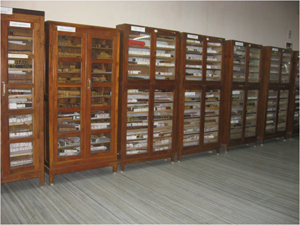 A recent tentative survey by the Institute of Asian Studies, Madras, indicates that there are still about a hundred thousand palm-leaf manuscripts surviving in South Indian repositories alone, with thousands more scattered across the subcontinent and overseas. But most of these palm-leaves are approaching the end of their natural lifetime and are facing imminent destruction from dampness, fungus, white ants, cockroaches and - not least of all - disposal by villagers whose actions are dictated less by reverence than by superstition. A recent tentative survey by the Institute of Asian Studies, Madras, indicates that there are still about a hundred thousand palm-leaf manuscripts surviving in South Indian repositories alone, with thousands more scattered across the subcontinent and overseas. But most of these palm-leaves are approaching the end of their natural lifetime and are facing imminent destruction from dampness, fungus, white ants, cockroaches and - not least of all - disposal by villagers whose actions are dictated less by reverence than by superstition.
What knowledge is contained in this scattered corpus? A tentative survey suggests that most are minor or local works of folk literature - a treasure trove of ethnographic and historical information in itself. But more practically, some 30-40% of the corpus consists of technical manuals and works dealing with traditional sciences. These include, notably, tracts dealing with traditional systems of medicine like Ayurveda, Siddha and Unani which have been shown to be remarkably effective in the treatment of a wide variety of diseases.
 Hence, the translation and publication of such technical manuals could potentially yield benefits far outweighing the effort and expense of recovering them. Many thousands of manuscript-leaves stand to be recovered - or lost forever - depending upon the action or inaction taken now. The first stage comprises of identification, collection, conservation microfilming and preservation of these palm-leaf manuscripts. The second stage consists of editing translation, textual criticism etc. Hence, the translation and publication of such technical manuals could potentially yield benefits far outweighing the effort and expense of recovering them. Many thousands of manuscript-leaves stand to be recovered - or lost forever - depending upon the action or inaction taken now. The first stage comprises of identification, collection, conservation microfilming and preservation of these palm-leaf manuscripts. The second stage consists of editing translation, textual criticism etc.
The Institute of Asian Studies has assembled a project team of highly-qualified and dedicated specialists with experience in preserving and translating palm-leaf manuscripts. Already the project has published the first five volumes of a projected 25-volume Descriptive Catalogue of Palm-leaf Manuscripts.
Traditional medical texts
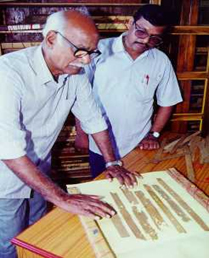 Today there is a growing appreciation worldwide about traditional knowledge, particularly in the field of medical science. Most Indian palm-leaf manuscripts on traditional science pertain to medicine such as the Siddha and Ayurvedic systems of treatment along with the Unani system popular in the Muslim world. Modern research has demonstrated that these traditional systems give lasting relief to many chronic diseases. These systems echew surgery and yet the curing effect is remarkable, even for very serious diseases which may not cured by allopathic treatment. Moreover, the native medicines are based either on herbs or metals which are not injurious to health when used according to traditional prescription. Nowadays with the help of palm-leaf manuscripts attempts are being made in India to treat life-threatening diseases like AIDS, heart disease and diabetes. Today there is a growing appreciation worldwide about traditional knowledge, particularly in the field of medical science. Most Indian palm-leaf manuscripts on traditional science pertain to medicine such as the Siddha and Ayurvedic systems of treatment along with the Unani system popular in the Muslim world. Modern research has demonstrated that these traditional systems give lasting relief to many chronic diseases. These systems echew surgery and yet the curing effect is remarkable, even for very serious diseases which may not cured by allopathic treatment. Moreover, the native medicines are based either on herbs or metals which are not injurious to health when used according to traditional prescription. Nowadays with the help of palm-leaf manuscripts attempts are being made in India to treat life-threatening diseases like AIDS, heart disease and diabetes.
The publication of these rare manuscripts will undoubtedly be a welcome contribution to medical research in India, Asia and worldwide. In India alone there are a great many medical and technical colleges that will be eager to access the published results of this project, both in printed and digital formats. Uncounted humlife improved for millions of others by analysing traditional Asian medical treatments based upon commonly available herbs and minerals.
Being organic in nature, palm-leaf manuscripts are susceptible to decay and disintegration over time. Most of the extant manuscripts available in the custodial organisations and with the individual practitioners are on the verge of disintegration.
Project specialists therefore also take steps to preserve original manuscripts. Normally chemical treatments are given using fumigation chambers to protect palm-leaves from white ants, fungus and other insects. Insecticides and pesticides are useless as the pests develop immunity over time. IAS-trained specialists treat manuscripts using fumigation boxes or chemicals like Thymol and chloromate solution.
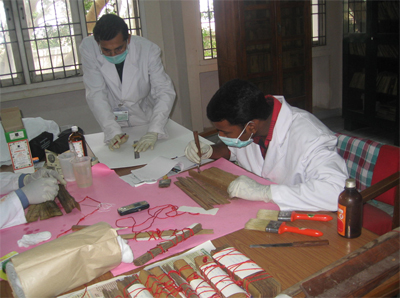 Digitalization is the crowning stage; the process is currently being developed by an international team of distinguished scholars from the University of Cologne (Germany) and the University of California-Berkeley (USA) with headquarters at the IAS (India) as part of the Tamil Lexicon and Pongal-2000 collaborative projects to compile an Online Tamil Lexicon (OTL). This same technology may be applied to digitalize the contents of palm-leaf manuscripts once they have been rendered into modern Tamil by specialists in this field. Digitalization is the crowning stage; the process is currently being developed by an international team of distinguished scholars from the University of Cologne (Germany) and the University of California-Berkeley (USA) with headquarters at the IAS (India) as part of the Tamil Lexicon and Pongal-2000 collaborative projects to compile an Online Tamil Lexicon (OTL). This same technology may be applied to digitalize the contents of palm-leaf manuscripts once they have been rendered into modern Tamil by specialists in this field.
Once these texts have been translated and digitalized, they will be disseminated in the form of a searchable online database and as CD-ROMs as well as conventional publication as books. Libraries around the world including major manuscript repositories in India will have their own digital 'reading rooms' where any MS folio may be brought up for viewing. The pilot programme at the Institute of Asian Studies, Madras, will also serve as a regional training centre for librarians and manuscriptologists from other Asian countries that wish to acquire new techniques of preservation for their national palm-leaf manuscript collections.
For more information about the Memory of the World programme, visit
UNESCO's Memory of the World Website |
